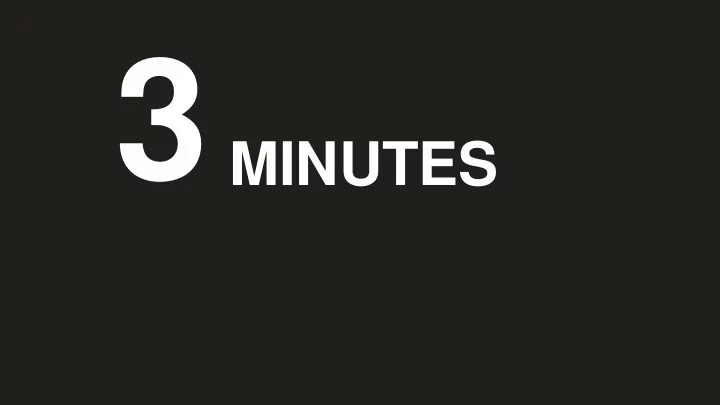

3 MINUTES
3 MINUTES How frequently the average office worker is interrupted or distracted UNIVERSITY OF CALIFORNIA, IRVINE
23 MINUTES
23 MINUTES How long it takes to return to a task after being interrupted UNIVERSITY OF CALIFORNIA, IRVINE
204 MILLION
204 MILLION Emails sent per second MASHABLE
8
8 Average number of windows open at the same time on a worker’s computer TORKEL KLINGBERG
30
30 Average number of times per hour an office worker checks his or her email inbox NATIONAL CENTER FOR BIOTECHNOLOGY INFORMATION
221
221 How often the average smartphone user in the UK checks his or her phone every day TECHMARK
4.9 BILLION
4.9 BILLION Connected devices in use in 2015 GARTNER
200 %
200 % Increase in average time spent on mobile devices since 2012 GLOBALWEBINDEX
49 %
49 % Workers who can’t choose where to work depending on the task STEELCASE WELLBEING SURVEY GLOBAL AVERAGE, 17 COUNTRIES
Think Better Neuroscience: The Next Competitive Advantage
Attention is a scarce resource.
Too much information is resulting in an “epidemic of overwhelm.”
204 MILLION Emails sent per second MASHABLE
4.9 BILLION Connected devices in use in 2015 GARTNER
200 % Increase in average time spent on mobile devices since 2012 GLOBALWEBINDEX
Intensification of work
We’re experiencing more distractions We are experiencing More often. more distractions, more often.
3 MINUTES How frequently the average office worker is interrupted or distracted UNIVERSITY OF CALIFORNIA, IRVINE
23 MINUTES How long it takes to return to a task after being interrupted UNIVERSITY OF CALIFORNIA, IRVINE
Humans are hardwired to be distracted.
Workplaces and schools are not helping.
What neuroscience is teaching us
Understanding attention
Understanding attention Controlled attention is our capacity to intentionally and willfully direct our minds to a specific item or task.
Understanding attention Stimulus-driven attention is an involuntary attraction to any external or internal lure.
Our brains at work
OUR BRAINS AT WORK 1. Brains get tired
OUR BRAINS AT WORK The brain comprises merely 2% of the body’s weight, but consumes more than 20% of the daily caloric intake of energy—more than any other organ in the human body. PREVENTIVE MEDICINE
OUR BRAINS AT WORK 2. Multitasking attention is inefficient
OUR BRAINS AT WORK Research shows that multitasking increases your error rate by 50%. JOHN MEDINA
OUR BRAINS AT WORK “ Change focus ten times an hour, and your productive thinking time is only a fraction of what’s possible.” DAVID ROCK
OUR BRAINS AT WORK Flow Being fully immersed in a feeling of energized focus, full involvement and enjoyment in the process of the activity.
OUR BRAINS AT WORK 3. Mindfulness trains the brain
OUR BRAINS AT WORK “ Meditation can actually change the structure of your brain, which impacts self-awareness, perception and cognitive functioning.” RICHARD DAVIDSON
OUR BRAINS AT WORK “ Engaging in mindfulness means that we are practicing our ability to recognize when our minds have wandered and gaining ability to redirect our attention. The more we practice this, the better we get at it.” BEATRIZ ARANTES, SENIOR RESEARCHER, STEELCASE
OUR BRAINS AT WORK “ The workplace and schools can be designed to mitigate distractions and prime us to better manage our attention.” JOHN MEDINA
Respecting brain modes
RESPECTING BRAIN MODES Steelcase researchers and designers have identified three brain modes that each require distinct behaviors and settings.
RESPECTING BRAIN MODES Brain modes Focus
RESPECTING BRAIN MODES Brain modes Focus Regenerate and inspire
RESPECTING BRAIN MODES Brain modes Focus Regenerate and inspire Activate
RESPECTING BRAIN MODES Focus When we need to deeply focus on something, it is important to avoid unwelcome distractions.
RESPECTING BRAIN MODES Regenerate and inspire When overwhelmed minds need a break, regenerative activities strengthen brain functioning.
RESPECTING BRAIN MODES Activate When we need to boost our attention, movement pumps oxygen and fresh blood through our brain and triggers enhancing hormones.
Movement engages the brain.
RESPECTING BRAIN MODES Respecting the rhythms of our brain Focus Thinking work Regeneration and inspiration Building & developing Activation Lunch relationships Serendipitous encounter Project / coffee + food review Brainstorm Taking a moment / session movement Taking a moment / Taking a moment / personal phone call plan the day
Design to support attention
No single solution for everyone, all the time
DESIGN TO SUPPORT ATTENTION Ecosystem of interconnected and interdependent spaces that support the physical, cognitive and emotional needs of people.
Choice + Control
DESIGN TO SUPPORT ATTENTION Palette of place Posture
DESIGN TO SUPPORT ATTENTION Palette of place Posture Presence
DESIGN TO SUPPORT ATTENTION Palette of place Posture Presence Privacy
Thoughtstarters
THOUGHTSTARTERS Focus
THOUGHTSTARTERS Focus
THOUGHTSTARTERS Regeneration and inspiration
THOUGHTSTARTERS Regeneration and inspiration
THOUGHTSTARTERS Regeneration and inspiration
THOUGHTSTARTERS Activation
THOUGHTSTARTERS Activation
THOUGHTSTARTERS Activation
Neuroscience provides a new lens through which we can understand cognitive wellbeing and optimize performance.
Recommend
More recommend